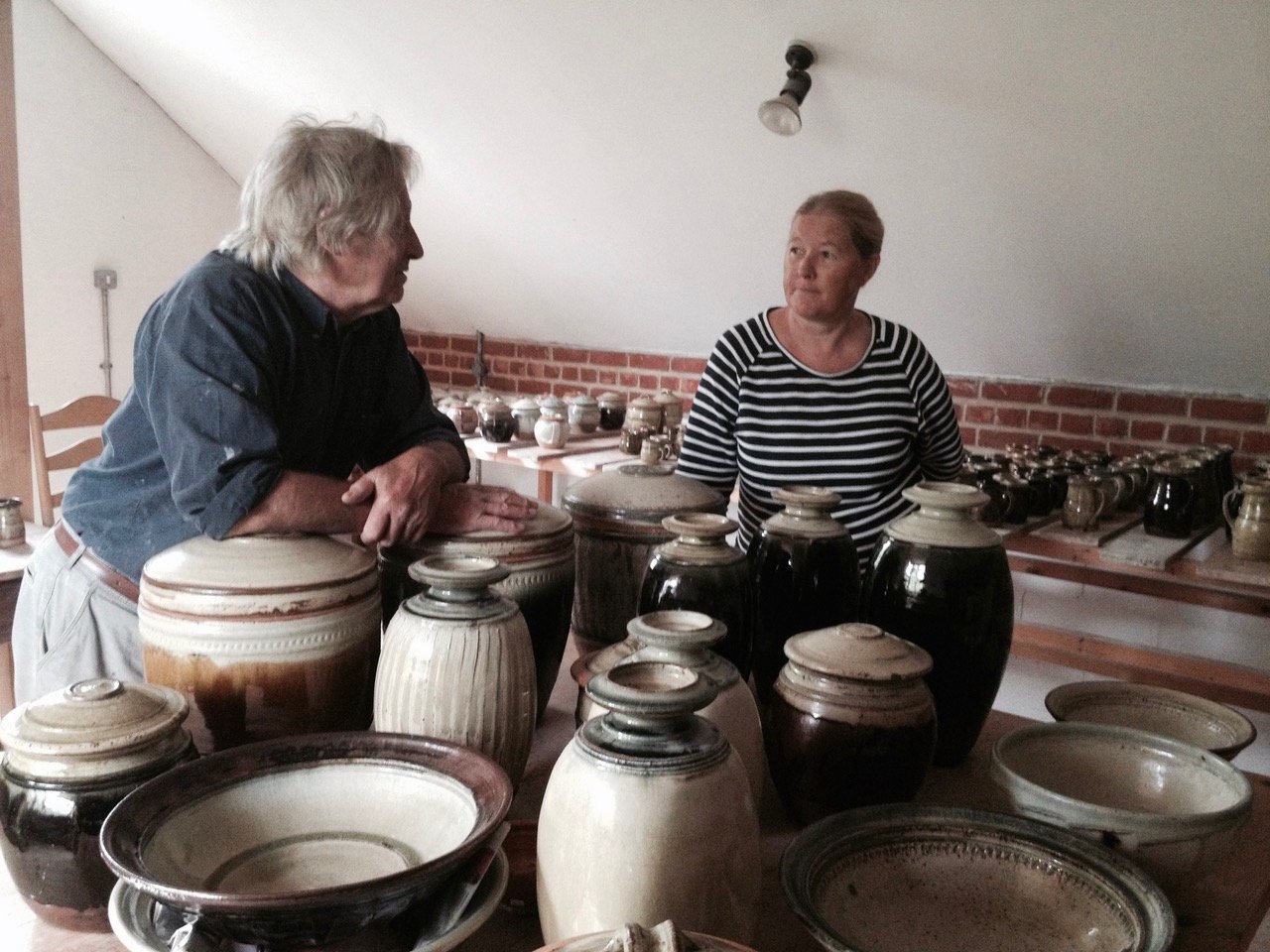Richard Batterham was, for me, the defining figure of post-war stoneware pottery. His pots were certainly better known than the man, who didn’t do group shows, nor even that many one-man exhibitions, wasn’t keen on interviews and magazine articles, had only the tiniest handful of apprentice potters (just Thiébault Chagué and his own son, Reuben?), and turned down all invitations to teach (except rowing, at his old school, Bryanston, approached from the end of the lane where he lived and worked). His reputation as curmudgeonly didn’t fit my experience of him. He and Dinah were always welcoming, and their lifestyle seemed to be one to which most “food and drink” potters aspire.
His majestic bottle vases are not strictly “food and drink”, and the huge versions of his “standard” forms (made often, for the USA) would be difficult to actually use. Conversely his smaller and absolutely useful pots – cut sided bowls, lidded jars, “supper plates”, tea pots - have a dignity and nobility that makes them as one with the bigger work.
As I say, he didn’t teach students directly, but he probably had more pupils indebted to him than any potter since Leach and Cardew. Mike Dodd, Jim Malone and Phil Rogers have all acknowledged the inspiration they took from his work, and he, in turn, was pleased that they were working to principles that were central to his notion of pottery and that they might be an example to others.
With Phil Rogers going (much too soon) just before Christmas and now John Leach and Richard Batterham, after long careers, within a week of each other, pottery has lost three of its most formidable figures.
Richard with caddies, bottles and my sister-in-law.
